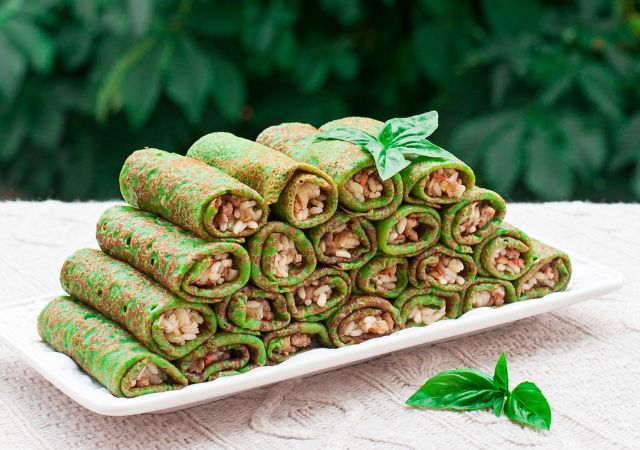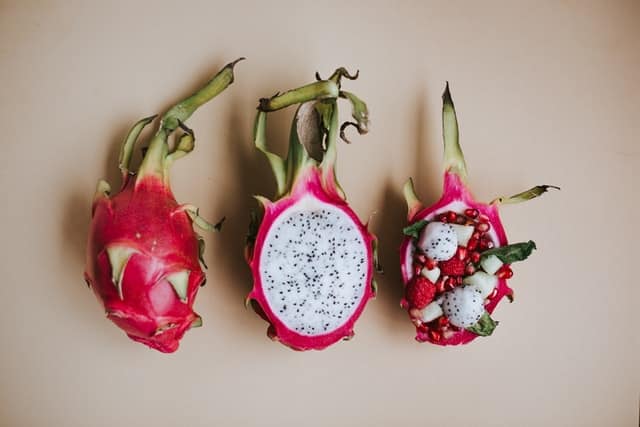
Dragon fruit has recently become a popular staple fruit in local grocery stores. It is known as pitaya, pitahaya, or strawberry pear and has three varieties. There is a red skin with white pulp and black seeds, yellow skin with white pulp, and a red skin with red pulp.
Contents
Dragon fruit originates in Mexico and Central America. The name pitaya comes strictly from Mexico. The common, modern name dragon fruit came from when Europeans introduced the fruit to Asia and south America. The name comes from the appearance of the fruit – the red skin with green dragon-like scales.
The fruit grows on the Hylocereus cactus. It is also known as the Honolulu queen, meaning the flowers only open at night. Hylocereus comes from the Greek words “hyle” which means woody, and the Latin word “cereus” means waxen.
The Perfect Pick
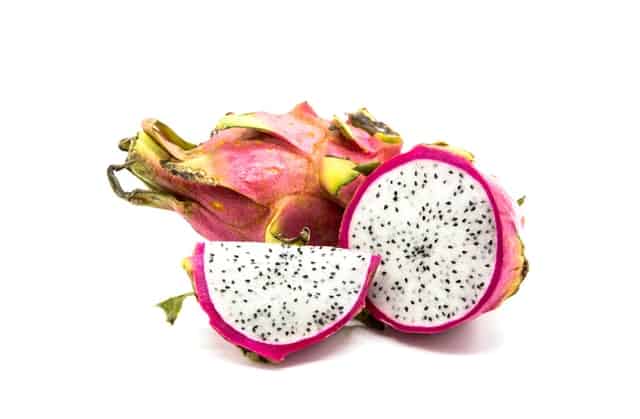
For shipping reasons, dragon fruit is normally picked under ripped. They do this because it is firmer and doesn’t bruise as easily, and wont spoil during it’s travels. When picking the perfect dragon fruit, look for a heavier fruit for its size. This means it’s the juiciest one of the bunch available. You will know this by picking up a few and feel the difference.
It should be consistently pink on the outside with no signs of bruising. Dragon fruit is normally firm to the touch, but when it’s ripe it will give a little under the pressure of a squeeze, just like an avocado. Another sign to tell when it is ripe is when the “scales” or wings dry out and turn a yellow with brown at the tips. If you do buy an unripe dragon fruit, leave it on the counter to ripen until the wings turn yellow.
Preparing and Dishes
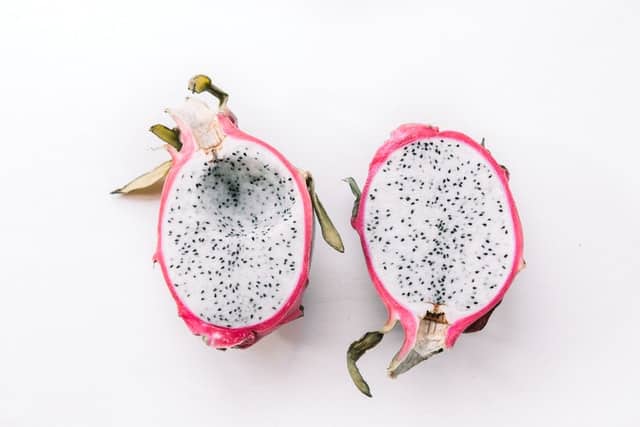
To prepare this fruit, simply cut it open and scoop out the white or red pulp. The red skinned dragon fruit tastes like a mixture of a pear and kiwi, with a similar texture to a ripened kiwi. Dragon fruit is great by itself, but you can also have it various ways. You can toss it into a salad along with other tropical fruits or other favourites. You can cut it into a salsa or squeeze it into juice or water. You can also churn it into ice cream! Be careful not to add too much sugar, though. You can also have it on top of yogurt or in your next smoothie.
Storage
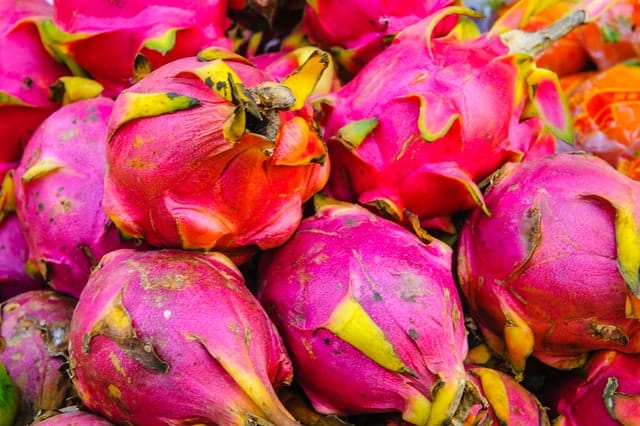
If you have any left-over dragon fruit, you can store it in a plastic bag in the fridge for up to five days. You can also freeze it for up to three months. Freezing your dragon fruit is a great way to get it into your smoothies and get that perfect smoothie texture!
Yellow Dragon Fruit
Yellow dragon fruits have a yellow skin with a white flesh and black seeds. The seeds in this variety are a bit bigger than the other types. It has white flesh like the red and white variety. It has a thick, knobby yellow skin. The species name is Hylocereus megalanthus.
Red with Red Flesh
There are very small differences between the three dragon fruit varieties. The red skin, red flesh dragon fruit is sometimes pink or purple. It has tiny scales along the body, which are green and thicker than the white fleshed dragon fruit. There are narrower, darker, and more scales than the white dragon fruit. The flower tips are a deeper red than the white variety, as well. A very slight indication that a dragon fruit is the red variety is there are more thorns on their branches. It is said that fruits and vegetables that have a deep red color contain more antioxidants. However, the red variety has a higher sugar content than the white variety. The species name is Hylocereus costaricensis.
Red with White Flesh
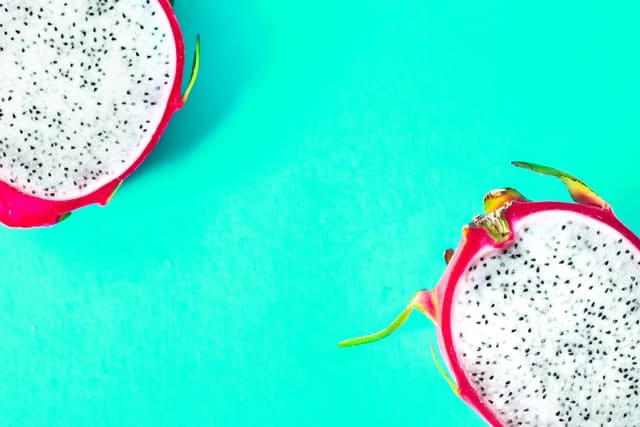
The scales on the white dragon fruit variety are larger with green-yellow tips. They are less curvy than the red flesh variety. They are also wider, fewer, and farther apart. The flowers are a lighter red or sometimes green or yellow. Even with the difference, they both produce white, fragrant flowers. It has a lower sugar content than the red flesh type, but also has lower antioxidant levels. The antioxidants are found in the black seeds and not in the actual flesh as much. Since there is a lower sugar content, it is great for diabetics. This species name is Hylocereus undatus.
All of these dragon fruit varieties have similar nutritional value and health benefits.
Health Benefits
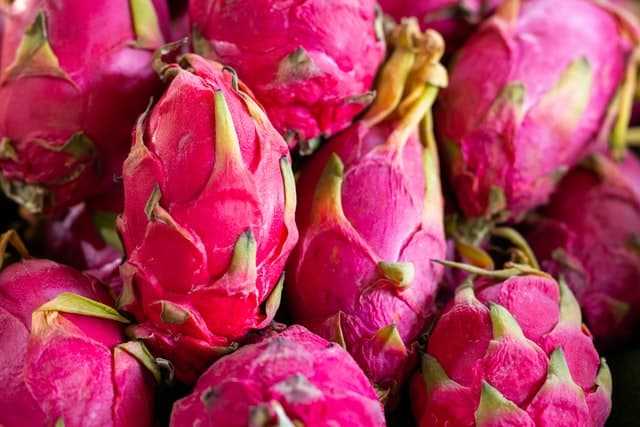
Dragon fruit has many health benefits for everyone, especially those with diabetes. It contains vitamin C, E, fiber, iron, and magnesium. It also has a low-calorie count. It also has several types of antioxidants, which help rid your body of free radicals. Free radicals are linked to chronic disease and aging.
Antioxidants
Some of the antioxidants are betalains, hydroxycinnamates, and flavonoids. Betalains can be found in the pulp of the red dragon fruit and have been shown to protect against bad LDL cholesterol. Hydroxycinnamates aid in anticancer activity in test-tube animal studies. Lastly, flavonoids are the largest and most diverse group of antioxidants. It is linked to better brain health and reduced risk of heart disease.
Immune Booster
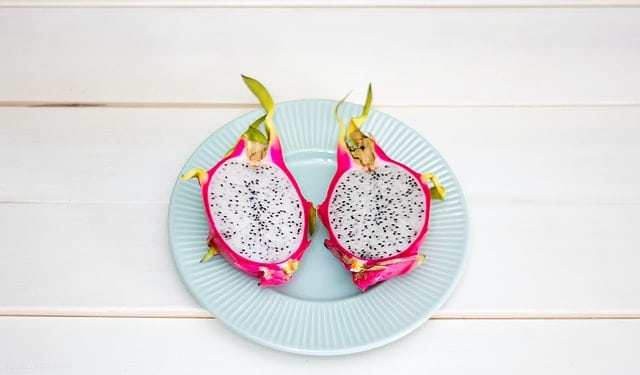
Dragon fruit is also good for strengthening your immune system. The fruit contains vitamin C and carotenoids that boost immune system function and prevent infection. It also protects your white blood cells from damage. The white blood cells in your immune system attack and destroy harmful substances. However, they are extremely sensitive to damage by free radicals, which dragon fruit also aids in.
Iron
Dragon fruit is one of the few fresh fruits that contain iron. Iron plays a crucial role in transporting oxygen throughout your body. It also plays an important role in breaking down food into energy. About 30% of the world’s population is deficient in iron, making it the most common nutrient deficiency worldwide. Dragon fruit contains 8% of your recommended daily intake, while vitamin C helps your body absorb the iron.
Magnesium
Dragon fruit offers more magnesium than most fruits, with 18% of your recommended daily intake in just one cup. Your body contains about 24 grams of magnesium which is present in every one of your cells and takes part in over 600 important chemical reactions. Magnesium takes part in reactions needed for the breakdown of food into energy, muscle contraction, bone formation and even DNA creation, for example.
Studies Show
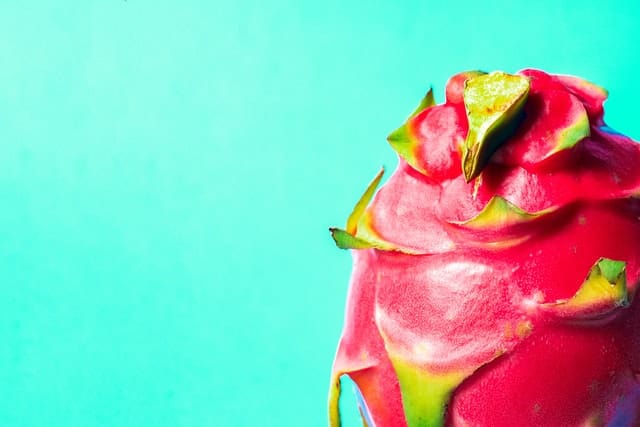
A study done with both red and white dragon fruit show that there was a reduction in insulin resistance and fatty liver in obese mice. When the mice were given an extract of the fruit, they gained less weight and reduced inflammation, as well as the growth of healthy gut bacteria.
Dragon fruit has a potential link to better control blood sugar levels. This is because dragon fruit encourages the growth of pancreatic cells that produce insulin. In a clinical trial, the effects of dragon fruit with a placebo in people with type 2 diabetes or prediabetes. Its authors conclude that the dragon fruit’s effect on fasting plasma glucose in people with prediabetes was significant.
Nutritional Value
While dragon fruit can’t heal diabetes, it has a lot of nutritional value. Some argue that there is no specific type of dragon fruit that is better suited for diabetics. Some of the trials conducted show that dragon fruit had very little effect on those with type 2 diabetes. Those with prediabetes had more of a reduction in sugar levels than type 2 diabetics.
Allergens
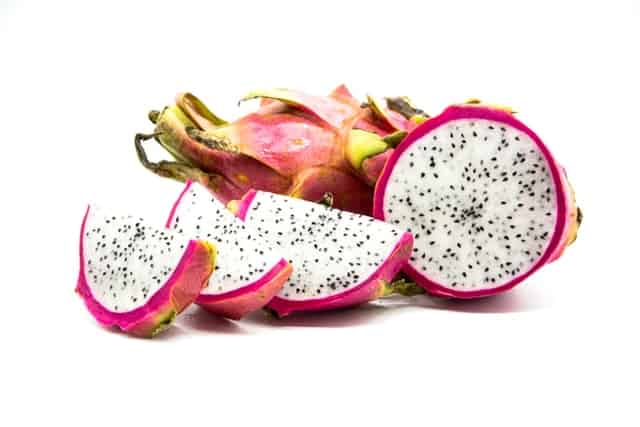
There was another study stating that those with no allergies had dragon fruit and found they were extremely allergic to it. Studies still need to be done when it comes to dragon fruit and allergies, as well as diabetes. Dragon fruit has also been used to treat hypertension. The seeds are what have been demonstrated to help regulate blood sugar levels.
They also found that the more dragon fruit a person eats, the greater the blood sugar benefits can be. However, the study did not find a correlation between eating dragon fruit and improved control of type 2 diabetes.
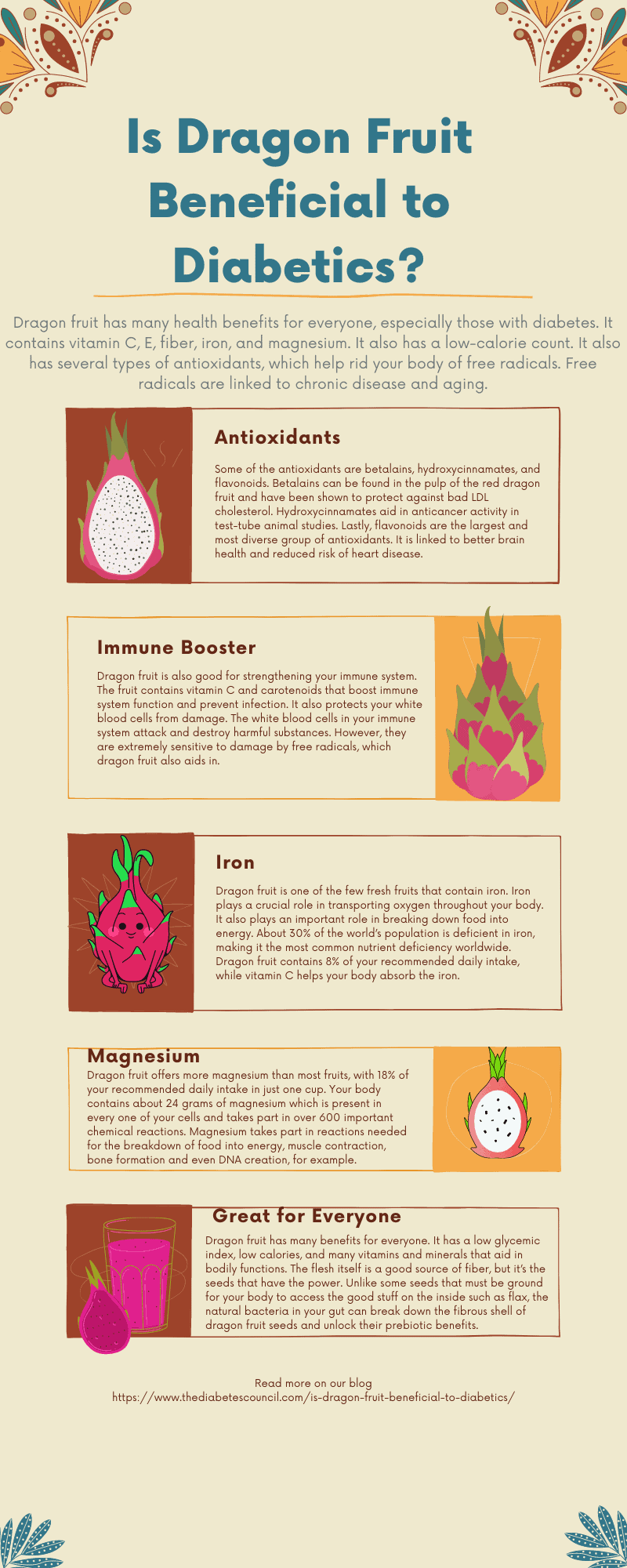
Great for Everyone
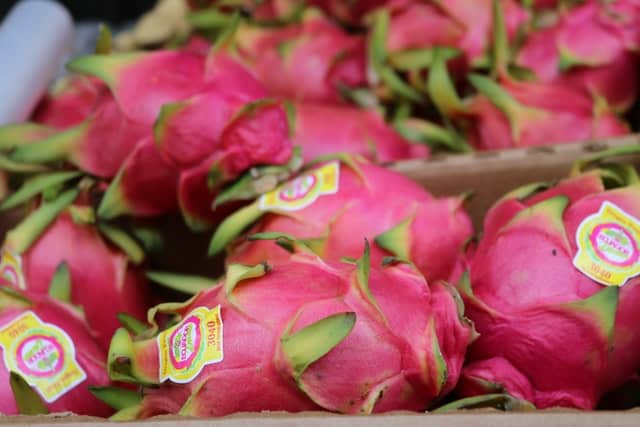
Dragon fruit has many benefits for everyone. It has a low glycemic index, low calories, and many vitamins and minerals that aid in bodily functions. The flesh itself is a good source of fiber, but it’s the seeds that have the power. Unlike some seeds that must be ground for your body to access the good stuff on the inside such as flax, the natural bacteria in your gut can break down the fibrous shell of dragon fruit seeds and unlock their prebiotic benefits.
Dragon fruit can be eaten by itself, in smoothies, fruit salads, or in salads. Some great combinations with dragon fruit are grapes, apples, watermelon, and oranges. Make sure to choose fruits that you can have that don’t raise your blood sugar, though!





